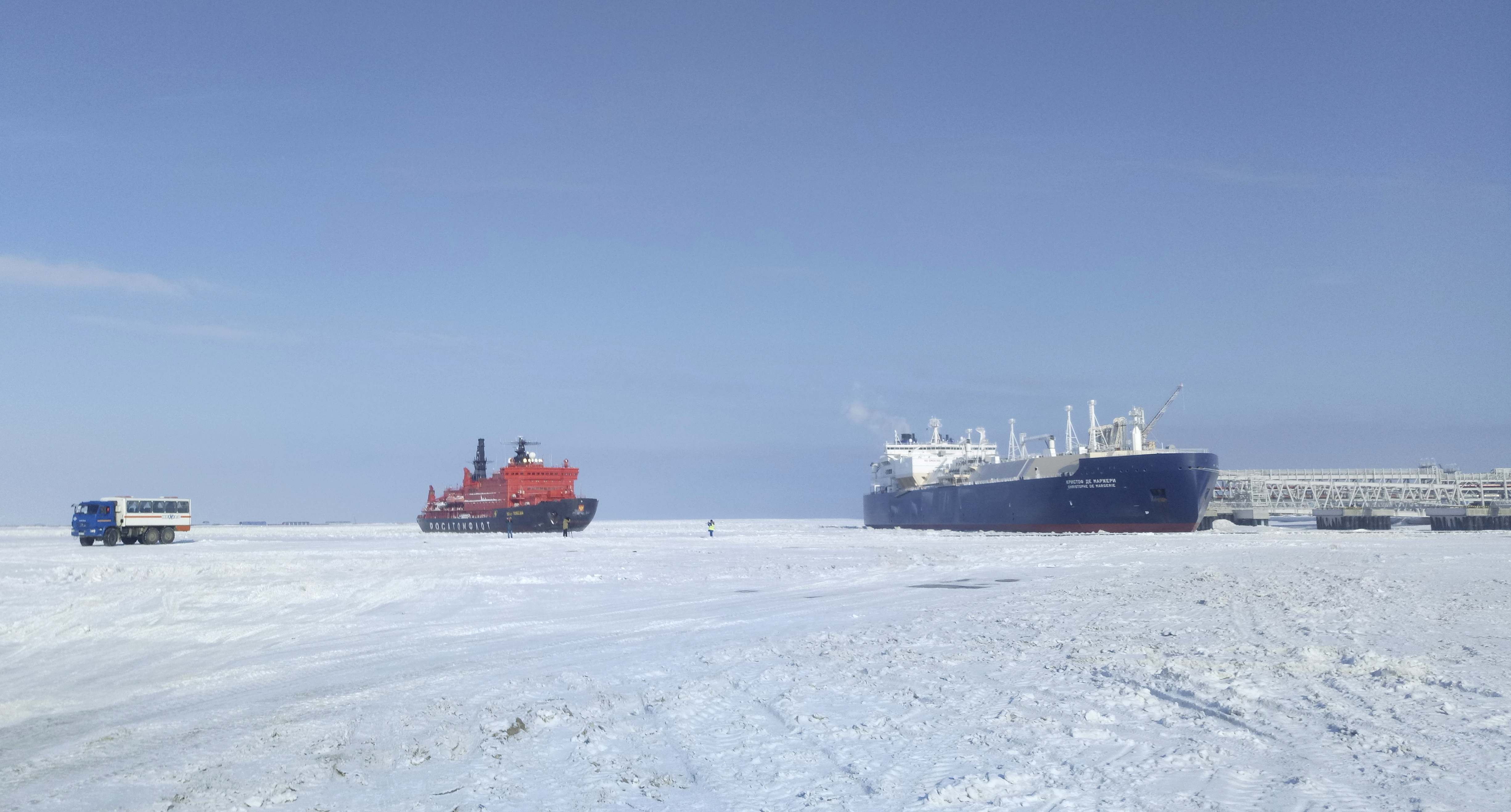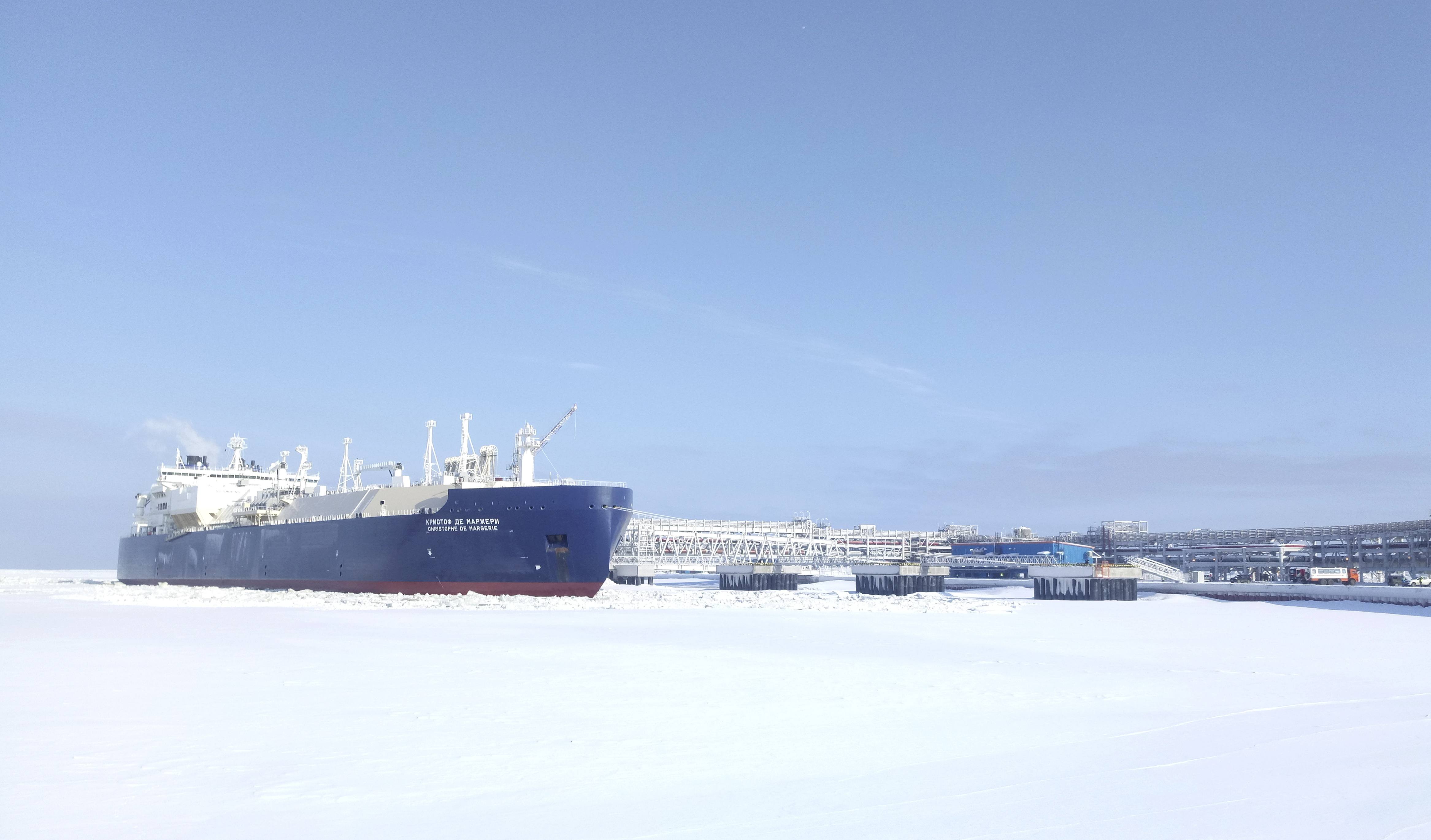As the Arctic Ocean thaws, ice blows west, helping Russia’s shipping ambitions

OSLO — Russian shipping in the Arctic is benefiting from winds that are driving the oldest and thickest sea ice towards North America, further opening a remote region that is thawing amid global warming, scientists say.
The thinning Russian ice could help liquefied natural gas tankers, due to start exports from Russia’s Yamal Peninsula in late 2017, to navigate an icy route east to Asia for more than a planned six months of the year, they said.
Almost all attention on Arctic shipping has focused on how global warming is shrinking the extent of ice around the North Pole, opening a summertime short-cut route between the Atlantic and Pacific Oceans.
But little-noticed shifts in the age of the ice, driven by prevailing winds and currents, are also helping Russia.
“Winds are blowing the ice out of the Northern Sea Route along the coast of Russia” and towards North America, said Jeremy Mathis, Director of the Arctic Research Program at the U.S. National Oceanic and Atmospheric Administration.
NOAA maps show that almost all the ice near Russia in winter is now only a year old and typically up to about 2 meters (6 feet 6 inches) thick, with older and more jagged ice concentrated towards North America.
By contrast, in 1985, ice older than five years was found across the Arctic Ocean, NOAA data show. Old ice can build up into hull-tearing ridges perhaps 20 meters thick.
“The old ice is like a bar of butter straight out of the freezer, hard as rock. The new ice is like warm butter – you can put a knife through it,” said Robert Corell, a leading U.S. Arctic expert at the Global Environment & Technology Foundation.
“Russia will benefit most in coming years,” he said, because the younger ice will allow ships including LNG tankers to navigate for ever longer between Asia and Europe. The Arctic Ocean is widely predicted to be ice-free in summertime by 2050.
So far, most traffic on the Russian coast is between Russian Arctic ports or opening exports from Russia of goods such as oil and gas, metals, fertilizers, coal and timber.
LNG Test
In March, the Christophe de Margerie, the first ice-breaking LNG tanker built for Russia’s Sovcomflot (SCF), docked at the Arctic port of Sabetta to test its LNG terminal. This month, it took an LNG cargo via the Arctic from Norway to Asia.

SCF says the tanker, which can carve through ice 2.1 meters thick, will be able to serve European ports year-round and sail to Asia from July to December when there is least ice. Another 15 ice-class tankers are being built by Daewoo Shipbuilding for the project.
SCF and Daewoo declined to predict how far the season to Asia might lengthen in coming years.
In March, SCF deputy CEO Igor Tonkovidov told the Russian newspaper Kommersant that it might be possible to go east in winter as a “navigation experiment,” if accompanied by an ice-breaker. But he said “the route will not be the most economically efficient.”
Uncertainties about ice, high insurance rates, hefty fees for Russian ice-breaker escorts and a lack of search and rescue teams still discourage use of the Arctic.
There were just 19 full transits between the Atlantic and Pacific Oceans last year, according to the Northern Sea Route Information Office in Murmansk. It says the Arctic route from Yokohama in Japan to the Dutch port of Rotterdam is 7,345 nautical miles, which is 3,860 shorter than via the Suez Canal.
Aker Arctic Technology, based in Finland and which designs and tests ice-going vessels, says the shrinking, younger ice will tend to open more routes.
But “nobody can guarantee that this is the case always,” said Kari Laukia, head of ship design and engineering, because of big ice variations from year to year.
Reporting By Alister Doyle in Oslo, Gleb Stolyarov in Moscow and Yuna Park in Seoul.